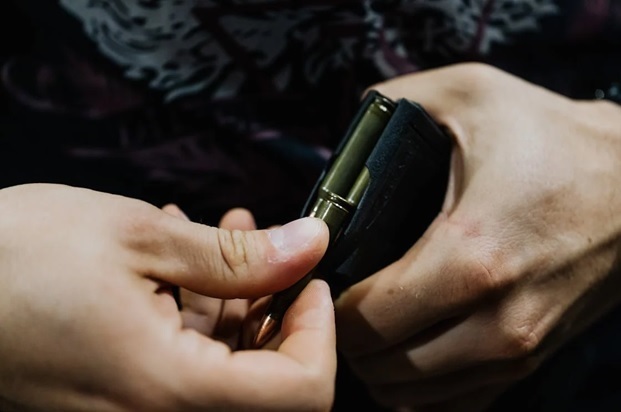Gun ownership has surged since 2020, and a very large portion of those purchases were to first time buyers.
Now, many of us are fortunate enough to have a parental figure or a close friend to get us into the world of shooting sports.
Others are not so lucky, and need to do all the learning on their own, with no mentor at all.
Now, it can be done, but the world of firearms is intimidating and oftentimes the information is very nuanced.
To that end, here are 5 important things that gun owners, especially new gun owners with no tutelage, should know.
One Cartridge Can Be Loaded with Many Different Types of Bullets
A 9mm cartridge is a 9mm cartridge, right? Well, technically yes, but not so fast. First, nomenclature is very important.
The .380 ACP is technically a 9mm cartridge - 9x17. It is not the same as 9mm Luger, AKA 9x19, and a gun chambered for one should not shoot the other.
More importantly, even if you take a look at two 9mm Luger rounds, though a gun chambered in 9mm Luger could shoot them both, the cartridges could vary considerably with respect to load data.
Just take a look at the bullet. One of the most common types of 9mm ammo is 9mm FMJ, or full metal jacket. This bullet type is designed for stability, reliability, and penetration - not energy transfer.
By contrast, we have 9mm HP, or hollow point, such as Federal HST or Hydra-Shok ammo. These bullets are designed to expand on contact, dumping their energy into and neutralizing a threat.
There is much more variability in the world of cartridges than this - for instance, the difference between FMJ rifle ammo and OTM rifle ammo, like Federal Gold Medal Match, which is loaded with Sierra MatchKing bullets and is designed for extreme accuracy at long ranges.
The point is, pay attention when you’re looking at a box of ammo, because the type of bullet matters.
Cartridges Can Be Reloaded (Or Scrapped)
New shooters, take note - don’t throw away your brass. A cartridge, as long as it is in good shape after being fired, can be reloaded, and high-quality brass can be reloaded several times. This also goes for plastic shotshells.
Not only can you reload your brass, and take control over performance, but you can also scrap it at a recycling center and some places might even pay you for it.
Guns Are Very Specific in their Chamberings
If you look at your gun’s barrel stamp, you will see very specific information about chamberings. Say you have a .22 - it’s probably stamped .22LR on the barrel.
That means the gun can fire .22 Long Rifle cartridges. Some .22 rifles might be stamped something like .22S, L, LR, which means they can also fire .22 Long and .22 Short cartridges in addition to LR.
The barrel stamp matters because it is tied to chamber dimensions, which dictate what cartridges the gun can safely fire.
It is very important to be aware of this because it’s easy to get ammo confused. Say you have a 12 gauge with a 3” chamber. That gun can likely fire 2-¾” and 3” shells, but not 3-1/2” shells.
Take .223 Remington; that chamber can fire .223 safely, but not 5.56, even though the two cartridges are nearly identical.
The moral of this story is you need to know what your gun’s chamber is and stick to it. There are some chamberings that are hybrid and can accept more than one cartridge, but that’s a topic for another time. To play things safe, especially while you’re still learning about firearms, only ever load and shoot exactly the cartridge for which your gun is chambered.

You Shouldn’t Handle Ammo More Than Necessary
You may have seen people at the range with those massive ammo cans full of loose rounds. Sometimes ammo is sold like this; sometimes people just dump their ammo into cans to make it easier to transport in bulk, rather than carrying a ton of little boxes.
Here’s the thing, though. The oils and salts on your skin can cause corrosion, both to brass as well as to the jacket of the bullet itself. Therefore, it’s actually best if you handle ammo as little as possible - so yes, leave it in the box until you’re ready to shoot.
If You Don’t Store Ammo Right, It Can Go Bad
High humidity and high temperatures can both spell doom for ammo. The former can corrode the cause and the bullet, and the latter can cause propellant and primer to break down, resulting in a hangfire or a dud when you pull the trigger.
The bottom line here is that you should protect your ammo by storing it somewhere dark, cool and dry. That means keep it out of the trunk, shed, crawl space, attic, and basement.
Stock Up On Specialty Ammo Like Federal Gold Medal Match
Here for some specialty grade of ammo like Federal Gold Medal Match or HST? You can get it here, along with bulk ammo. Take a look through our collection to find what you need and where you see a deal, buy up quick - ammo’s been expensive recently.

